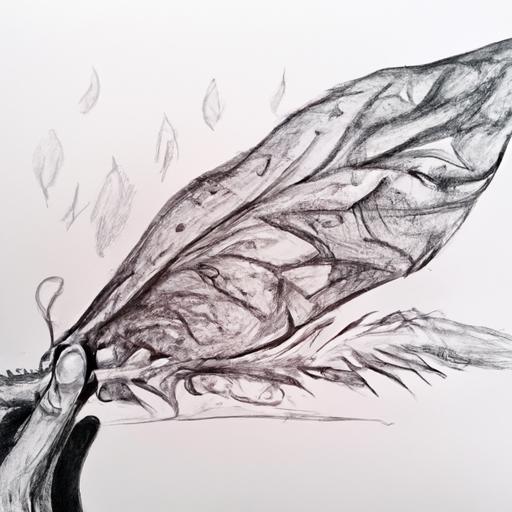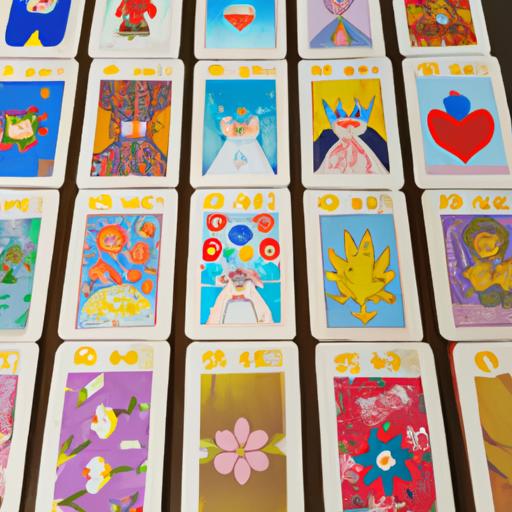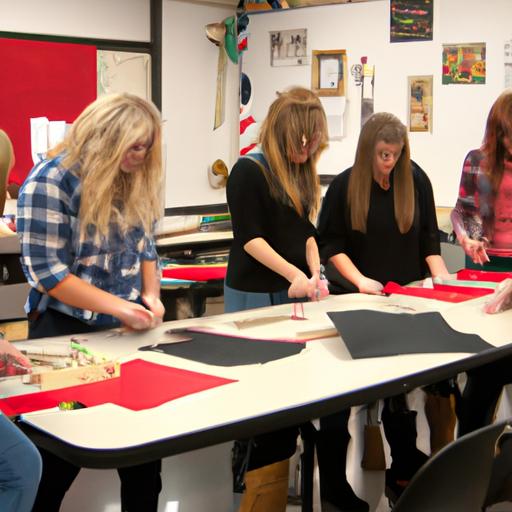Have you ever wondered what lies beyond the conventional art supplies you see in stores? The world of art is vast and ever-evolving, and artists are constantly pushing boundaries to create awe-inspiring masterpieces. In this article, we will embark on a journey to explore the realm of non-traditional art materials. From natural elements to recycled objects, digital tools to unconventional painting mediums, we will uncover a treasure trove of possibilities that can elevate your artistic expression.
Introduction to Non-Traditional Art Materials
A. Definition and Significance of Non-Traditional Art Materials
When we think of art materials, our minds often gravitate towards paintbrushes, canvases, and tubes of paint. While these traditional supplies have their merits, non-traditional art materials open up a whole new world of creative opportunities. Non-traditional materials encompass a wide range of elements, objects, and mediums that extend beyond the conventional art toolkit. They can include natural and organic materials, recycled and repurposed items, digital and technological tools, and textiles, fibers, and mixed media.
B. The Growing Popularity and Exploration of Alternative Art Supplies
In recent years, there has been a surge in interest and exploration of non-traditional art materials among artists worldwide. This shift can be attributed to a desire for innovation, uniqueness, and sustainability in artistic endeavors. Artists are increasingly seeking unconventional materials to challenge the boundaries of traditional art and create captivating and thought-provoking pieces. By embracing non-traditional materials, artists can infuse their work with a distinct character and imbue it with a deeper meaning.
So, why limit yourself to the confines of traditional art supplies when there is a vast array of unconventional materials waiting to be discovered? Join me as we embark on an inspiring journey through the world of non-traditional art materials. In the following sections, we will delve deeper into various categories of these materials and explore the endless possibilities they offer. Let’s unlock your creativity and uncover the hidden gems that can take your art to new heights.
Exploring Unconventional Art Materials
A. Overview of Unique and Unconventional Materials used in Art
Artistic expression knows no bounds, and artists constantly seek innovative ways to bring their visions to life. Non-traditional art materials offer a vast palette of possibilities, allowing artists to break free from the constraints of conventional supplies. From natural elements like leaves, feathers, and stones to unexpected objects like recycled paper, plastic, or even electronic components, the world of non-traditional materials is rich with potential.
By incorporating these unconventional materials into their work, artists can add a distinctive touch to their creations. The textures, colors, and properties of these materials can evoke emotions, challenge perceptions, and create unique visual experiences. Whether it’s the roughness of tree bark, the translucency of recycled glass, or the interplay of light on digital screens, non-traditional materials offer endless sources of inspiration.
B. Benefits and Challenges of Using Non-Traditional Art Supplies
Using non-traditional art supplies comes with a myriad of benefits. Firstly, it allows artists to stand out from the crowd and create artwork that is truly one-of-a-kind. By exploring unconventional materials, artists can develop their own artistic language, making their work instantly recognizable and inviting viewers to engage with it on a deeper level.
Moreover, non-traditional materials often bring a sense of sustainability to the artistic process. By repurposing discarded objects or using natural elements, artists can contribute to a more eco-friendly approach to art creation. This not only adds a layer of meaning to their work but also raises awareness about the importance of environmental consciousness.
However, working with non-traditional materials also presents its own set of challenges. These materials may require different techniques, preparation methods, or handling considerations. Artists need to experiment, adapt, and embrace the unexpected to harness the full potential of these unique supplies. Despite the challenges, the rewards of exploring non-traditional art materials are immeasurable.
C. Examples of Famous Artists who have Utilized Non-Traditional Materials in their Work
Throughout history, numerous renowned artists have pushed the boundaries of traditional art by incorporating non-traditional materials into their practice. One notable example is Pablo Picasso, who famously used found objects like bicycle parts and cardboard in his groundbreaking collage works. His innovative use of unconventional materials revolutionized the art world, inspiring generations of artists to think outside the bo
Another iconic artist known for her exploration of non-traditional materials is Yayoi Kusama. She utilizes mirrors, lights, and polka dots to create immersive installations that transport viewers into otherworldly spaces. Kusama’s use of unconventional materials not only captivates the senses but also challenges the boundaries of perception and reality.
These artists, among many others, serve as beacons of inspiration, showcasing the boundless possibilities that non-traditional art materials offer. Their daring and innovative approaches invite us to step outside our comfort zones and embrace the limitless potential of unconventional supplies in our own artistic journeys.
Unleashing Creativity with Non-Traditional Art Materials
In the realm of art, boundaries are meant to be pushed, and traditional supplies are merely the tip of the iceberg. Let’s take a closer look at the various categories of non-traditional art materials that can revolutionize your creative process.
B. Natural and Organic Materials: Embracing the Beauty of Nature
Nature has always been a source of inspiration for artists, and incorporating natural and organic materials into artwork adds a touch of raw beauty and texture. From leaves and twigs to seashells and feathers, the possibilities are endless. Imagine creating a stunning collage using pressed flowers or sculpting a masterpiece with driftwood. These materials can be sourced from your surroundings, allowing you to connect with nature while infusing your art with an organic touch.
C. Recycled and Repurposed Materials: Transforming the Ordinary into Extraordinary
One person’s trash can be another person’s artistic treasure. Recycled and repurposed materials offer a unique way to reduce waste and breathe new life into everyday objects. Consider transforming discarded bottle caps into a vibrant mosaic or repurposing old newspapers into intricate papier-mâché sculptures. The creative possibilities are boundless when you look beyond their original purpose and explore the artistic potential of these materials.
D. Digital and Technological Materials: Merging Artistry with Innovation
In today’s digital age, technology has become an integral part of the artistic landscape. Digital art tools and software provide artists with limitless opportunities to experiment and create. Whether through digital painting, graphic design, or 3D modeling, artists can harness technology to bring their visions to life. Embrace the digital realm and uncover the vast array of tools and techniques that can elevate your art to new heights.
E. Unconventional Painting and Drawing Materials: Thinking Outside the Brush
Painting and drawing need not be limited to traditional mediums like oils, acrylics, or pencils. Explore alternative materials that can add an unexpected twist to your artwork. Consider experimenting with coffee grounds for a unique textured effect or using melted wax as a medium for encaustic painting. By venturing beyond the expected, you can unleash your creativity and achieve captivating results.
F. Textiles, Fibers, and Mixed Media: Weaving Stories through Art
Textiles, fibers, and mixed media offer a realm of artistic possibilities that combine various materials to create multidimensional works. Incorporate fabric, thread, or yarn into your art to add tactile elements and create stunning textures. Explore the fusion of different mediums, such as combining painting with collage or sculpture with photography, to tell compelling stories through your artwork.
Now that we have explored the diverse categories of non-traditional art materials, it’s time to roll up your sleeves and embark on a creative adventure. Let your imagination run wild as you experiment with these unconventional supplies and discover the wonders they can bring to your artistic expression. Remember, the journey is just as important as the destination, so embrace the process, push the boundaries, and let your art speak volumes through the use of non-traditional materials.
Tips for Working with Non-Traditional Art Materials
In the pursuit of artistic innovation, it’s essential to approach non-traditional art materials with both creativity and caution. As you embark on your journey of exploration, keep these tips in mind to make the most of your unconventional supplies.
A. Safety Precautions and Considerations when using Unconventional Supplies
While experimenting with non-traditional art materials can be exciting, it’s crucial to prioritize your safety. Some unconventional materials may have unique properties or require special handling. Here are a few safety precautions to consider:
-
Protective Gear: Depending on the materials you’re working with, wearing gloves, goggles, or a mask may be necessary to safeguard yourself from any potential hazards.
-
Ventilation: Ensure you have adequate ventilation in your workspace, especially when using materials that emit fumes or dust particles.
-
Proper Disposal: Dispose of waste materials responsibly and in accordance with local regulations. Some non-traditional supplies may require specific disposal methods due to their composition.
B. Techniques and Approaches for Experimenting with New Materials
Working with non-traditional art materials opens up a world of possibilities for experimentation and innovation. Here are some techniques and approaches to explore:
-
Trial and Error: Embrace the process of trial and error to discover the unique qualities and potential of each material. Experiment with different techniques, application methods, and combinations to unlock their full artistic potential.
-
Mixed Media: Incorporate non-traditional materials alongside traditional supplies to create captivating mixed media artworks. Combine various textures and elements to add depth and intrigue to your compositions.
-
Unconventional Tools: Don’t limit yourself to traditional brushes or pens. Explore unconventional tools such as found objects, natural elements, or digital devices to create distinctive marks, textures, or effects.
C. Resources and References for Further Exploration
As you dive into the world of non-traditional art materials, it’s beneficial to seek inspiration and guidance from established artists and reliable resources. Here are some avenues to explore:
-
Art Communities: Engage with online art communities or forums to connect with fellow artists who are also experimenting with non-traditional materials. Share experiences, seek advice, and gain insights from their expertise.
-
Books and Publications: Explore art books and publications that focus on non-traditional materials and techniques. These resources often provide step-by-step instructions, tips, and inspiring examples to fuel your experimentation.
-
Workshops and Classes: Consider attending workshops or classes that specialize in non-traditional art materials. These hands-on experiences provide valuable guidance, feedback, and the opportunity to learn from seasoned artists.
By following these tips, you can navigate the exciting realm of non-traditional art materials with confidence and unleash your creativity in captivating and unexpected ways. Remember, there are no limits to what you can achieve when you embrace the unconventional.
Inspiring Artists and their Non-Traditional Artwork
A. Showcase of Renowned Artists Who Have Pushed Boundaries with Alternative Materials
Artists have always been at the forefront of experimentation, pushing the boundaries of what is considered traditional. Throughout history, visionary artists have fearlessly embraced non-traditional art materials, harnessing their unique qualities to create captivating and groundbreaking artwork. Let’s delve into the world of these remarkable artists and explore their unconventional choices.
One such artist is Tara Donovan, who has gained international acclaim for her extraordinary sculptures made from everyday materials such as toothpicks, plastic cups, and paper plates. By transforming ordinary objects into mesmerizing installations, Donovan challenges our perception of the mundane and invites us to see the beauty in the ordinary.
B. Analysis of their Techniques and the Impact of Their Unconventional Choices
When artists venture into the realm of non-traditional art materials, their techniques and choices have a profound impact on the final artwork. The incorporation of unconventional materials adds depth, texture, and an element of surprise to their creations, captivating viewers and evoking a visceral response.
Consider the work of El Anatsui, a Ghanaian artist known for his monumental tapestries made from discarded bottle caps and metal fragments. Anatsui’s meticulous arrangement of these unconventional materials creates shimmering and fluid sculptures that challenge our preconceived notions of traditional art forms. His work not only highlights environmental consciousness but also celebrates the beauty of transformation and repurposing.
By analyzing the techniques employed by artists like Donovan and Anatsui, we can gain insights into the boundless possibilities of non-traditional art materials. Their bold choices inspire us to think beyond the conventional, encouraging us to experiment and explore new avenues in our own artistic practice.
In conclusion, the work of these visionary artists serves as a beacon of inspiration for those seeking to break free from the constraints of traditional art materials. Through their innovative use of non-traditional materials, they have opened doors to new artistic possibilities and challenged the status quo. Let their fearless exploration ignite your own creative journey, as you embrace the unconventional and embark on a path of artistic discovery.
Section VI: Conclusion
As we conclude our exploration into the world of non-traditional art materials, it becomes evident that these unconventional supplies hold immense potential for artists seeking to break free from the constraints of tradition. The versatility and endless possibilities offered by non-traditional materials allow artists to create unique and captivating artworks that defy expectations.
Throughout this journey, we have discovered the significance of non-traditional art materials in expanding artistic horizons. By incorporating natural and organic elements, recycled and repurposed materials, digital tools, and unconventional painting mediums, artists can infuse their creations with a touch of innovation and ingenuity.
Embracing non-traditional materials not only opens doors to exciting possibilities but also allows artists to contribute to sustainability efforts. By repurposing everyday objects and exploring alternative mediums, artists can reduce waste and inspire others to think creatively about the materials they use.
As you embark on your own artistic endeavors, remember to embrace experimentation and think beyond the boundaries of traditional supplies. Allow your imagination to run wild and explore the vast world of non-traditional art materials. Who knows what remarkable creations you may bring to life?
So, unleash your creativity, challenge the norm, and let your art speak volumes through the unconventional. Embrace the extraordinary, and watch as your artistic journey takes on new dimensions. The world is waiting to witness your unique artistic voice. Let the non-traditional art materials be your guide as you embark on a path of endless discovery and boundless creativity.
Now, go forth and create masterpieces that captivate hearts and minds, using materials that defy expectations and inspire awe. The world is your canvas, and the possibilities are limitless. Let your art shine brightly, fueled by your passion and the unconventional materials that fuel your imagination.





